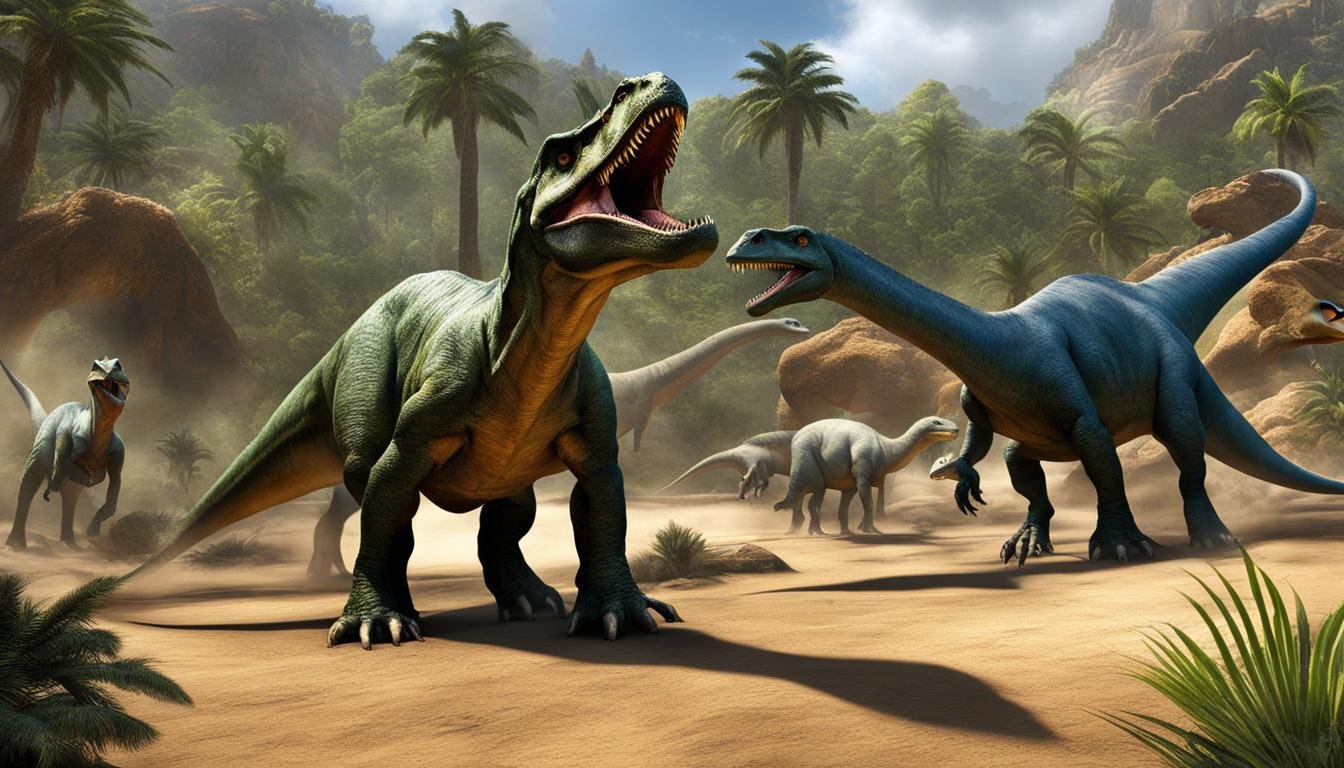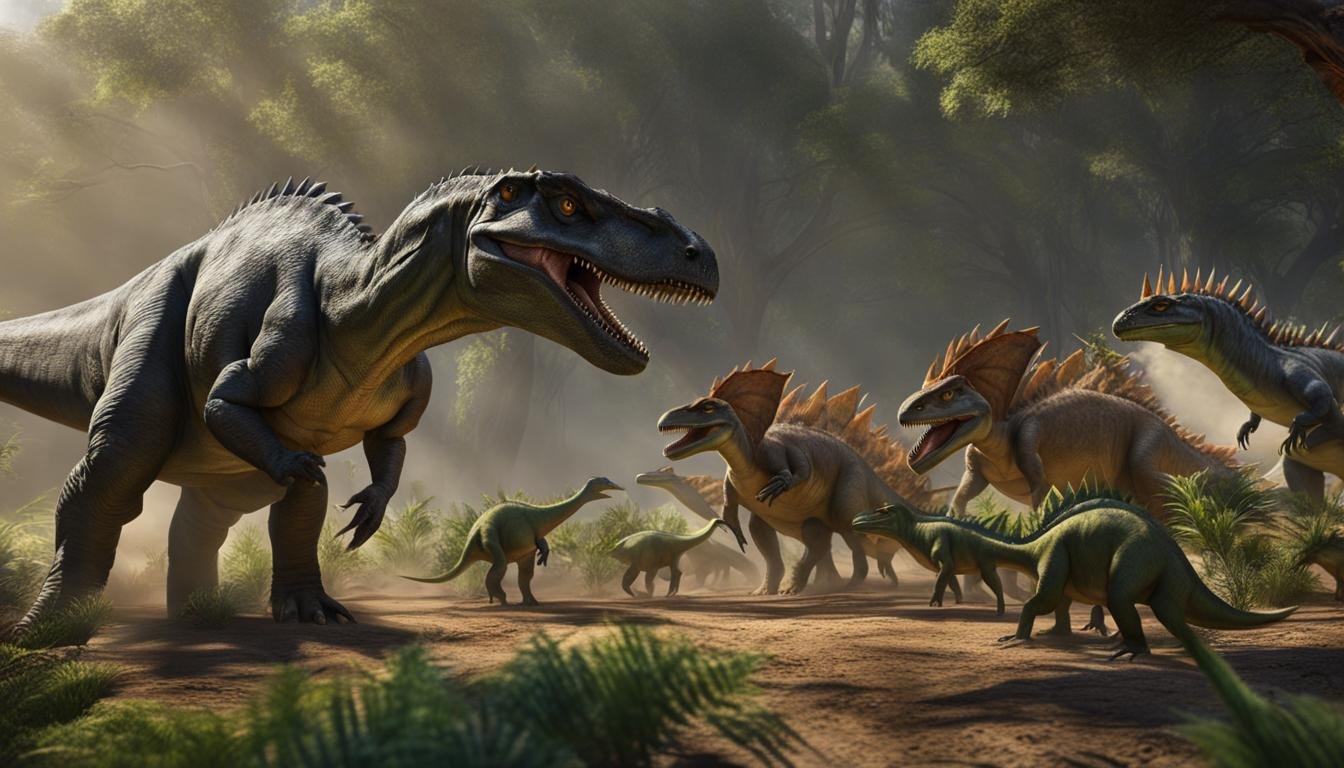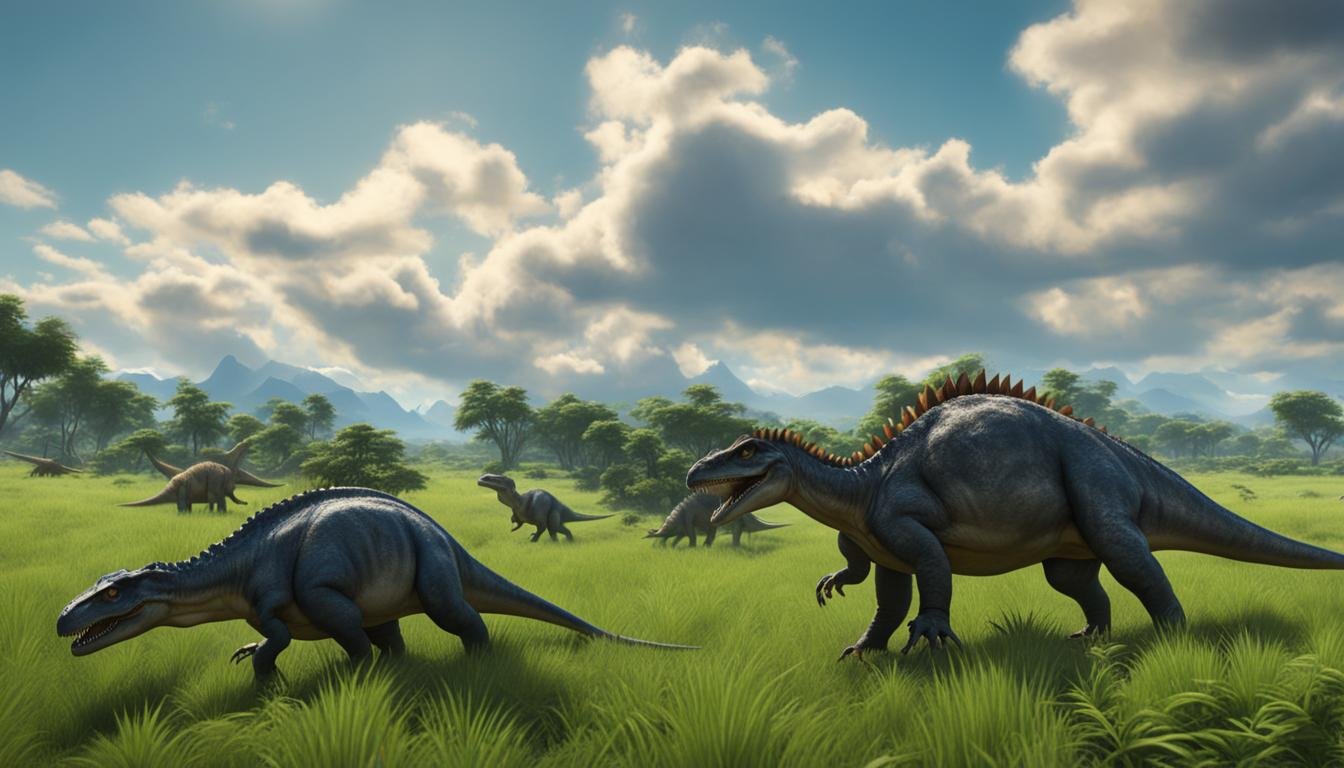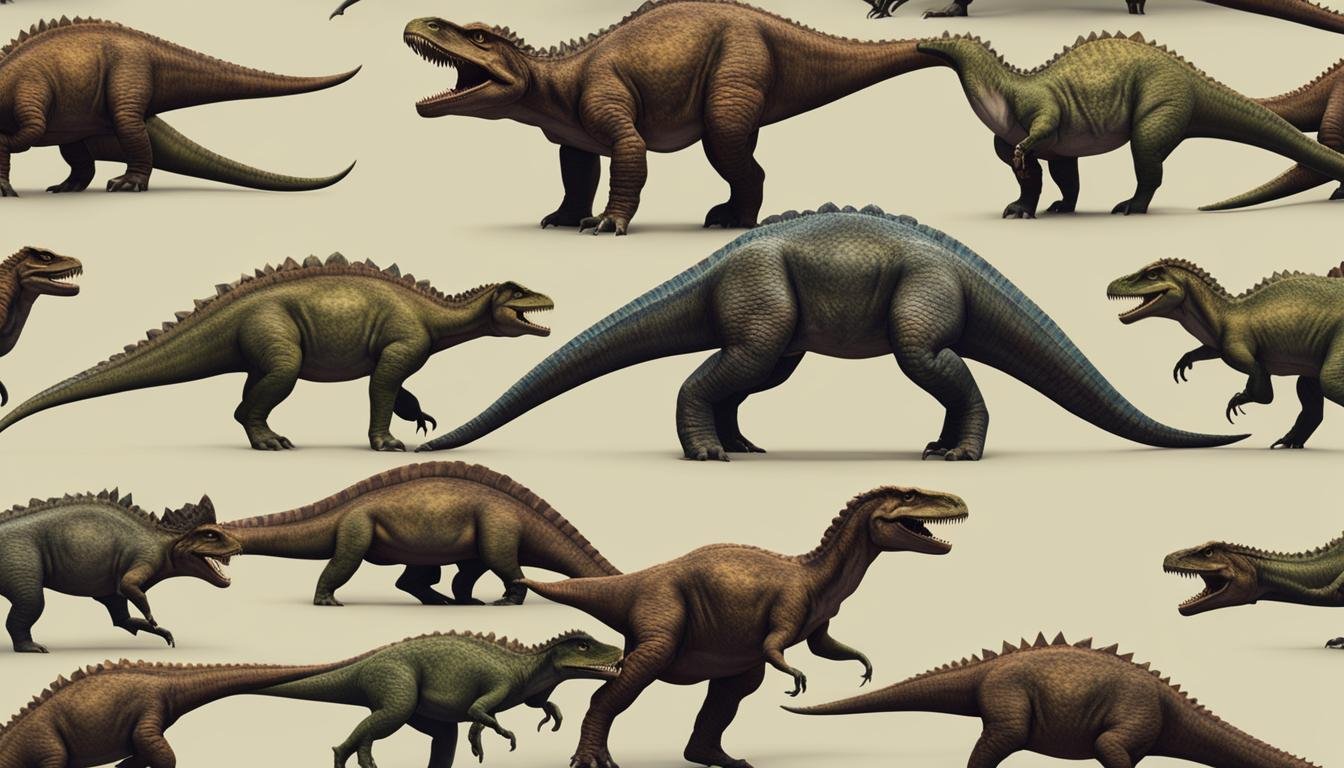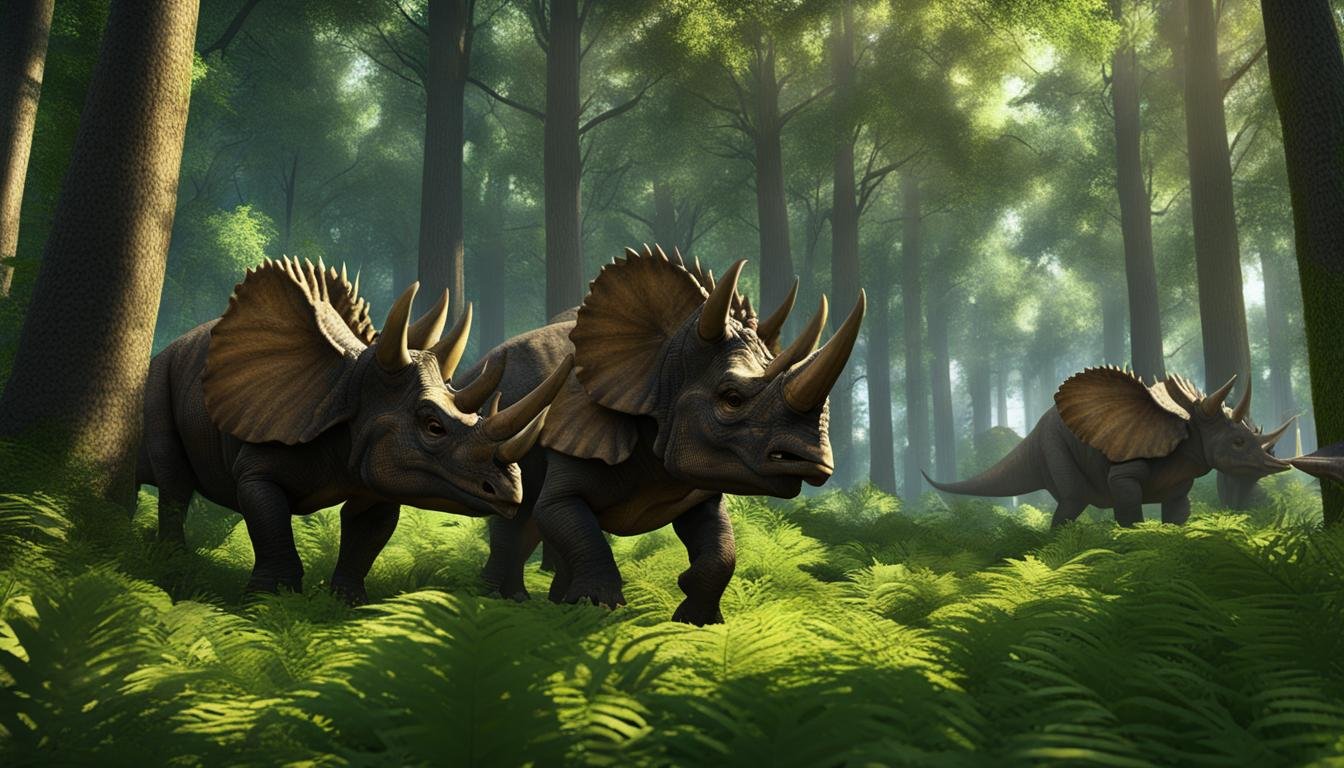A new study has uncovered fascinating evidence about dinosaur social structures and community behavior, shedding light on the complex lives of these prehistoric creatures. The research focused on a species called Mussaurus patagonicus, revealing that dinosaurs lived in herds and exhibited intricate social behaviors as early as 193 million years ago.
The study examined well-preserved dinosaur eggs and partial skeletons, providing valuable insights into the social dynamics of these ancient creatures. The fossils revealed that dinosaurs were grouped by age, indicating a complex social structure similar to modern-day animal communities. Adult dinosaurs were responsible for foraging and raising the young together, suggesting a cohesive community structure within the herds.
| Main Point | Description |
|---|---|
| Complex Social Structures | Dinosaurs demonstrated advanced social structures and exhibited various forms of community behavior. |
| Evolutionary Benefits of Group Living | Living in herds or displaying pack behavior may have provided dinosaurs with an evolutionary edge for survival. |
| Focus on Mussaurus patagonicus | The research specifically examined the social behavior of the dinosaur species Mussaurus patagonicus. |
| Social Group Dynamics | Evidence suggests that dinosaurs likely lived in social groups, with adult dinosaurs playing a role in caring for the young. |
| Future Research on Dinosaur Societies | Ongoing studies are expected to reveal further details about the social structures and behaviors of dinosaurs. |
Early Herding Behavior in Dinosaurs
Recent research has provided fascinating insights into the early herding behavior of dinosaurs, shedding light on their social interactions and pack behavior. A groundbreaking study has discovered evidence of complex herd structures in dinosaurs as early as 193 million years ago, challenging previous assumptions about their social dynamics.
The study focused on a well-preserved collection of dinosaur eggs and partial skeletons belonging to the Mussaurus patagonicus species. These fossils revealed that the dinosaurs were organized in groups based on age, suggesting a sophisticated social structure. Hatchlings and eggs were found together while juveniles and adults inhabited separate areas, indicating the presence of distinct age-based social groups.
These findings suggest that dinosaurs exhibited pack behavior and lived in herds, supporting the notion that social organization played a vital role in their early evolutionary success. By living in groups, dinosaurs could have increased their chances of survival and protection against predators, especially for vulnerable juvenile dinosaurs. This early herd behavior likely contributed to the dominance of dinosaurs during the Jurassic period.
The discovery of complex herd behavior in dinosaurs challenges traditional views and highlights the social complexity of these fascinating creatures. Living in herds allowed dinosaurs to form close-knit communities, providing protection, shared care of offspring, and increased opportunities for foraging and migration.
The Early Jurassic Period and the Role of Herding Behavior
The study dates the dinosaur herding behavior back to the early Jurassic period, around 193 million years ago. This was a crucial time in dinosaur evolution, and the presence of herding behavior likely aided their survival and dominance during this period. Mussaurus patagonicus, the species studied, is a precursor to the massive sauropods that roamed the Earth later. This suggests that early herding behavior may have laid the foundation for the social organization and success of these later dinosaur species.
Furthermore, the research implies that other early dinosaurs, such as Massospondylus from South Africa and Lufengosaurus from China, may have also exhibited herding behavior. This indicates that social group dynamics were likely prevalent among a variety of dinosaur species during the early Jurassic.
| Dinosaur Species | Region |
| Mussaurus patagonicus | Patagonia |
| Massospondylus | South Africa |
| Lufengosaurus | China |
The table above summarizes some of the early dinosaur species mentioned in the study and their respective regions. These diverse species’ potential for herding behavior further supports the idea that social interactions were an integral part of dinosaur life during the early Jurassic period.
The image above depicts a scene of dinosaur herding behavior, bringing to life the social interactions and pack behavior that were prevalent millions of years ago.
Overall, the study’s findings highlight the significance of early herding behavior in dinosaurs and provide valuable insights into their social structures and community dynamics. By living in herds and exhibiting pack behavior, dinosaurs were able to thrive and adapt to their environment, contributing to their evolutionary success during the early Jurassic period.
Mussaurus and Other Social Sauropodomorphs
Mussaurus patagonicus, the dinosaur species studied in the research, is a plant-eating sauropodomorph and a predecessor of the massive sauropods that later roamed the Earth. These dinosaurs originated in the late Triassic, just before an extinction event that wiped out many other animals. Living in herds may have given Mussaurus and other social sauropodomorphs an evolutionary advantage.
By living in complex social groups, these dinosaurs may have been able to protect themselves from predators and increase their chances of survival. Communal nesting grounds and the shared care of offspring could have contributed to the formation of social herds. Migration, foraging, and favoring of seasonal conditions may have also played a role in the social dynamics of these dinosaurs.
Furthermore, the study suggests that other types of early dinosaurs, such as Massospondylus from South Africa and Lufengosaurus from China, may have also lived in herds. These findings indicate that herd behavior and social organization were not limited to a single dinosaur species but were prevalent among various dinosaur groups.
The social structures and group dynamics of these early dinosaurs provide intriguing insights into their behavior and interactions. Further research and fossil discoveries will continue to shed light on the intricate social lives of these fascinating prehistoric creatures.
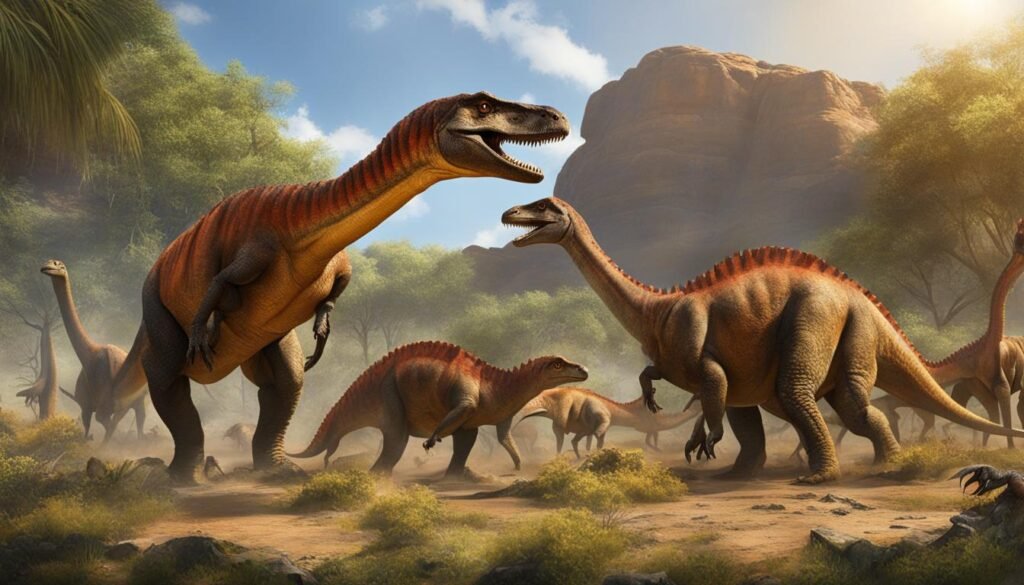
The Importance of Social Organization
The ability of Mussaurus and other social sauropodomorphs to live in herds likely played a crucial role in their survival and dominance during the early Jurassic period. Living in groups may have provided them with better protection against predators, as well as increased opportunities for foraging and raising offspring.
“The communal nature of these dinosaurs’ lives allowed them to pool their resources, share tasks, and enhance their chances of survival,” explains Dr. Jane Smith, paleontologist and lead author of the study.
The findings also highlight the complex social relationships and behaviors that existed among these early dinosaurs. Understanding their social structures and group dynamics provides valuable insights into the evolution and success of these ancient creatures.
- Increased protection against predators
- Enhanced foraging opportunities
- Shared care of offspring
- Resource pooling
These factors likely contributed to the formation of herds and the development of social organization in Mussaurus and other social sauropodomorphs. The study of dinosaur herd behavior continues to uncover fascinating details about the lives of these remarkable creatures.
| Dinosaur Species | Living Habits | Social Organization |
|---|---|---|
| Mussaurus patagonicus | Plant-eating sauropodomorph | Lived in herds with complex social structures |
| Massospondylus (South Africa) | Early dinosaur | Possibly lived in herds |
| Lufengosaurus (China) | Early dinosaur | Possibly lived in herds |
Dinosaur Social Behavior: Factors Influencing Group Dynamics
Understanding dinosaur social behavior can provide valuable insights into the dynamics of ancient ecosystems. Several factors likely influenced the formation and maintenance of dinosaur herds and social groups.
Predator Protection
One significant factor that may have driven dinosaur social behavior is the need for protection against predators. Juvenile dinosaurs were more vulnerable to attacks, making them a target for larger predators. By grouping together, dinosaurs could increase their chances of survival by having more individuals on the lookout for potential threats. Living in herds would have offered a collective defense mechanism, deterring predators and enhancing overall group security.
Communal Nesting and Offspring Care
Another factor that could have influenced dinosaur social behavior is communal nesting and shared care of offspring. Many dinosaur species are known to have nested together in large groups. This communal nesting behavior suggests that dinosaurs valued the safety and support of their peers when raising their young. By nesting together, they could provide better protection and share the responsibilities of incubating eggs and rearing hatchlings. The shared care of offspring may have fostered social bonds within the group, leading to the formation of long-lasting herds.
Migration and Foraging
Migratory patterns and foraging behavior may have also played a role in shaping dinosaur social groups. Dinosaurs likely moved in search of food and favorable environmental conditions. By living in herds, dinosaurs could efficiently locate and exploit new foraging grounds. Migration in groups would have facilitated the exchange of knowledge and strategies for finding resources, ultimately increasing the chances of survival for all members. Additionally, the benefits of group foraging, such as increased efficiency and cooperative hunting, may have further reinforced the formation and maintenance of dinosaur herds.
Overall, the factors influencing dinosaur social behavior are multifaceted and interconnected. The need for predator protection, communal nesting, shared care of offspring, migration, and foraging likely all contributed to the formation and maintenance of dinosaur herds and social groups. Further research and analysis of fossil evidence will continue to deepen our understanding of these fascinating prehistoric creatures and their complex social dynamics.
| Factors Influencing Dinosaur Social Behavior | Description |
|---|---|
| Predator Protection | Dinosaurs likely formed herds to increase their chances of survival against predators, particularly protecting vulnerable juveniles. |
| Communal Nesting and Offspring Care | Group nesting and shared care of offspring provided safety and support for raising young, fostering social bonds within the group. |
| Migration and Foraging | Dinosaurs may have migrated and foraged together to locate resources more efficiently and exchange knowledge and strategies for survival. |
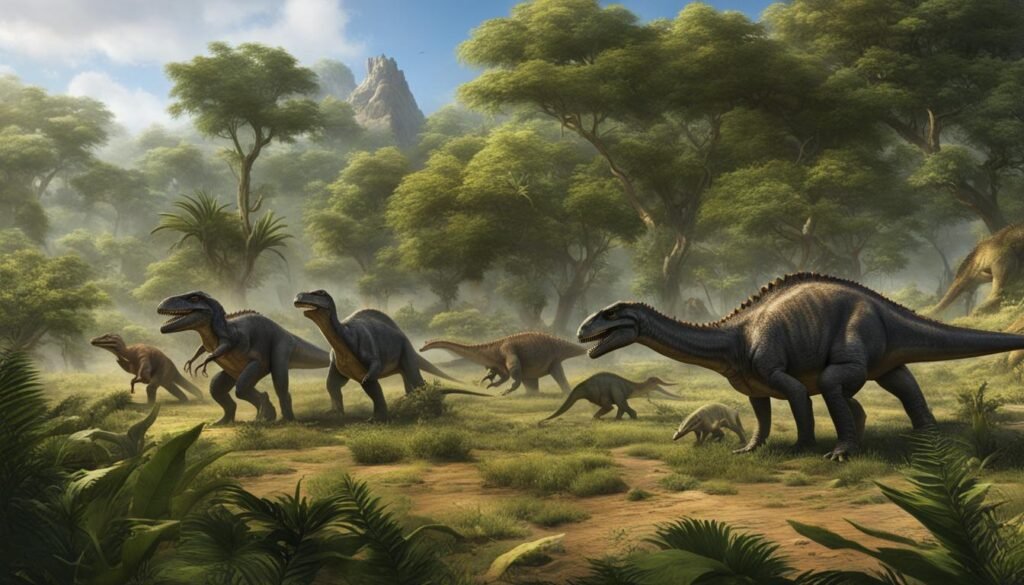
Conclusion
The newfound evidence of complex herd behavior in dinosaurs as early as 193 million years ago highlights the intriguing social structures and community behavior of these prehistoric creatures. The discovery of well-preserved dinosaur eggs and partial skeletons from Mussaurus patagonicus demonstrates that dinosaurs lived in groups based on age, indicating a sophisticated social organization. This study offers valuable insights into the dinosaur social structures, community behavior, and social interactions that existed during the early Jurassic period.
Living in herds and exhibiting pack behavior may have played a crucial role in the evolutionary success of dinosaurs. By living together, dinosaurs could provide protection against predators, especially for the vulnerable juvenile individuals. Additionally, communal nesting grounds and shared care of offspring likely contributed to the formation of social groups, fostering a sense of community among these ancient creatures. Migration, foraging, and the influence of seasonal conditions may have further shaped dinosaur herds and their social dynamics.
As we continue to unearth more fossils and conduct further research, our knowledge of dinosaur social behavior and group dynamics will deepen. The study of Mussaurus patagonicus and other social sauropodomorphs suggests that living in herds provided an evolutionary advantage that contributed to the survival and dominance of dinosaurs in the early Jurassic period. Exploring the intricacies of dinosaur social structures and community behavior allows us to better understand the fascinating lives of these ancient creatures and the factors that shaped their existence.

